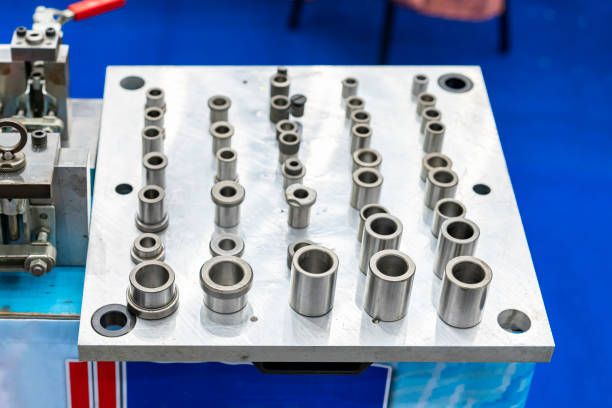Unlock your product's potential with our One-stop solutions!
+86-755-83222882

GET QUOTE
What Is Short Run Injection Molding?
Short run injection molding refers to the manufacturing process of producing plastic parts in relatively small quantities using molds made from inexpensive materials like aluminum or low-grade steel. It's a cost-effective method tailored for smaller-scale production needs. In the realm of manufacturing, where efficiency and cost-effectiveness reign supreme, short run injection molding plays a crucial role. It offers manufacturers the flexibility to produce plastic parts in low volumes without the hefty investments typically associated with standard injection molding processes. This adaptability is particularly valuable for industries requiring smaller quantities of specialized components.
Overview of Injection Molding
Explanation of Plastic Injection Molding Process
Plastic injection molding stands as one of the most widely used manufacturing technologies globally. This process involves melting plastic pellets, injecting the molten material into a mold, and allowing it to cool and solidify, resulting in the desired plastic part.
Key Components Involved
In every injection molding process, three key components play integral roles: the injection mechanism, the mold, and the clamp. The injection mechanism is responsible for melting and injecting the plastic material into the mold cavity. The mold, typically made of hardened steel, defines the shape and features of the final part. Lastly, the clamp holds the mold together during the injection and cooling phases.
Significance of Mold in Injection Molding
Among these components, the mold stands out as the cornerstone of injection molding. It determines the intricacies of the final part's design and features, making it a critical element in the manufacturing process. The quality and durability of the mold directly impact the efficiency and consistency of production runs, emphasizing its significance in injection molding operations.
Short Run Injection Molding Explained
Definition and Characteristics of Short Run Injection Molding
Short run injection molding is a manufacturing method tailored for producing plastic parts in smaller quantities. Unlike standard injection molding processes, short run molding offers flexibility and cost-effectiveness, making it ideal for niche or specialized products.
Materials Used: Aluminum or Low-grade Steel Molds
Short run injection molds are typically crafted from aluminum or low-grade steel. These materials provide a balance between durability and cost-efficiency, making them suitable for producing smaller batches of plastic parts without the hefty investment associated with high-volume production molds.
Comparison with Standard Injection Molding
Compared to standard injection molding, short run injection molding offers several advantages, including lower upfront costs, faster turnaround times, and greater flexibility in production quantities. While standard molding processes are geared towards high-volume production, short run molding caters to the needs of industries requiring smaller quantities of plastic parts.
Process Description: From Pellets to Finished Product
In short run injection molding, the process begins with plastic pellets fed into a hopper, where they are melted and compressed into a molten state. This molten material is then injected into the mold cavity under high pressure, where it takes the shape of the desired part. After cooling and solidification, the finished part is ejected from the mold, ready for inspection and packaging.
Benefits of Short-Run Plastic Injection Molding
Cost-effectiveness and Efficiency
One of the primary benefits of short-run injection molding is its cost-effectiveness, particularly for small to medium-sized production runs. By using less expensive molds and catering to lower production volumes, manufacturers can reduce upfront costs and minimize waste, ultimately improving overall efficiency.
Opportunity for Innovation and Concept Testing
Short run injection molding provides innovators and product developers with the opportunity to test and iterate on new ideas quickly and cost-effectively. By producing small batches of parts for concept testing, manufacturers can refine their designs and validate their concepts before committing to full-scale production.
Batch Manufacturing for Small and Medium-sized Businesses
For small and medium-sized businesses, short run injection molding offers the flexibility to produce plastic parts in batches tailored to their specific needs. This approach allows companies to minimize inventory costs, reduce lead times, and respond more quickly to changing market demands, ultimately improving their competitiveness in the marketplace.
Bridging the Gap Between Prototype and Full Production
Short run injection molding serves as a bridge between prototype development and full-scale production. By producing small quantities of parts for initial market testing, manufacturers can gather valuable feedback and make necessary adjustments to their designs before investing in larger production runs. This iterative approach helps minimize risk and ensures a smoother transition to full production.
Cost Considerations in Short Run Injection Molding
Factors Influencing Setup Costs
Setup costs in short run injection molding are influenced by various factors, including the complexity of the part, the number of cavities in the mold, and the specific requirements of the production process. By optimizing these factors, manufacturers can minimize setup costs and improve overall cost-effectiveness.
Molding Costs: Material, Press, and Manpower
Molding costs in short run injection molding encompass several elements, including material costs, press costs, and manpower expenses. Material costs vary depending on the type and quality of the plastic material used, while press costs are influenced by factors such as machine capacity and operating efficiency. Additionally, the manpower required to operate and maintain the molding equipment contributes to overall molding costs.
Tooling Costs and Different Approaches to Accounting
Tooling costs in short run injection molding primarily involve the design and fabrication of the mold used to produce the plastic parts. While tooling costs can vary depending on factors such as mold complexity and material selection, manufacturers have different approaches to accounting for these costs. Some companies may amortize tooling costs over the production volume, while others may treat them as separate expenses. Understanding the different approaches to tooling cost accounting is essential for optimizing cost management in short run injection molding.
Applications of Short Run Injection Molding
Low Volume Production Runs
Short run injection molding is ideally suited for low volume production runs, where smaller quantities of plastic parts are required. Industries such as automotive, electronics, and consumer goods can benefit from the cost-effectiveness and flexibility of short run molding for producing specialized components in smaller batches.
Functional Prototypes and Testing
Short run injection molding is commonly used for producing functional prototypes and conducting testing in product development processes. By quickly producing small quantities of parts for evaluation, manufacturers can iterate on designs and identify any issues or improvements before moving to full-scale production.
Market Testing and Bridge Tooling
Market testing and bridge tooling are additional applications of short run injection molding. Manufacturers can use short run molding to produce small quantities of parts for market testing, allowing them to gauge customer response and validate product concepts before committing to larger production runs. Additionally, bridge tooling can serve as a temporary solution to meet production demands while full-scale production tooling is being developed or repaired.
Conclusion
Short run injection molding offers a cost-effective and efficient solution for producing plastic parts in smaller quantities. By utilizing molds made from inexpensive materials like aluminum or low-grade steel, manufacturers can enjoy the flexibility and affordability of short run molding compared to traditional high-volume production processes. With shorter lead times, reduced setup costs, and the ability to produce custom parts on demand, short run injection molding presents numerous advantages for industries requiring smaller production runs.
If you're in need of short run injection molding services, look no further than SZOMK. With our state-of-the-art facilities and experienced team of professionals, we specialize in providing high-quality plastic parts for a wide range of industries. Whether you're looking to prototype a new design, conduct market testing, or bridge the gap between prototype and full production, we have the expertise and resources to meet your needs. Contact us today to learn more about how SZOMK can help you bring your plastic injection molding projects to life.


